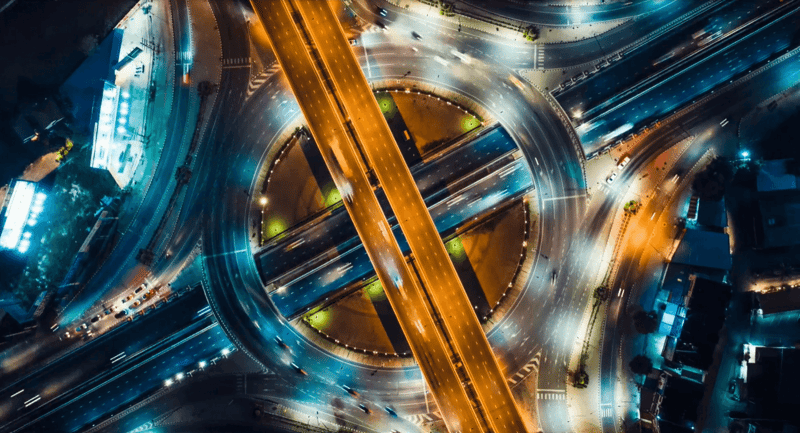Our webinar on Shades of Green Manufacturing introduced our company-wide research initiative for 2021-22 — sustainability — and its many implications for the future of jobs.
There has been much discussion on how sustainability is the next major business transformation, a natural progression and expansion of the digital transformation that we've seen and experienced over the last 20 years.In 2017, ManpowerGroup published research conducted in partnership with MxD that outlined how digital transformation would evolve existing jobs and create new ones. We built on that research with the release in 2020 of the MxD Hiring Guide, which provided a deep dive into future jobs and skills in cybersecurity in the manufacturing enterprise. Sustainability is a Manpower-sponsored 2021-22 initiative and, as with all of our research, it builds out key workforce assets: deep changes in business models; significant changes in value-based services and products; new and emergent roles and jobs reflecting specific work domains and capabilities; and opportunities for building resilience. However, not all digital transformation attempts brought desired results, and not all businesses or organizations will be successful at sustainability. One of the starting secrets to future success is to see how sustainability is not only “doing well by doing good,” but also expanding the ability to adapt and thrive in changing environments of known and unknown risks, which is what we see when we advocate for organizational resilience.
Our webinar profiled some of the factors needed for sustainability success. We previewed how holistically anticipating the 5Ps — the needs of people, planet, purpose, process/product and prosperity — will meet major obligations and accelerate major opportunities for all organizations, especially manufacturers. The connection between sustainability and resilience is that a sustainability imperative forces this wider angle lens – by looking at risks and opportunities across many business and organizational factors and shoring each of them up. This balance, this more holistic view that sustainability requires also enables resiliency by demanding consideration of more stakeholders and their concerns.
We thought we'd continue our chat format from the webinar to share a summary of what we covered in Shades of Green Manufacturing. I hosted the webinar and posed questions to Lory Antonucci, Director of Manufacturing Solutions and our lead researcher.
Rebekah: What do we mean by resilience? What do we mean by sustainability? What's the connection, and what's made them so timely to pursue?
Lory: I think your explanation of likening resilience to a pagoda is perfect. A pagoda is structured to withstand natural phenomena and still retain its shape. Traditional buildings can’t because the construction is too rigid. But a pagoda is ready for predictable and unpredictable events. To me resiliency also means a wider base of factors that you have awareness of, are willing to manage and as a result have more adaptation options to draw from as conditions change and opportunities or problems occur so that your organization can emerge and thrive after or with continuous or dramatic change.
As far as sustainability, we use the United Nations’ Brundtland Commission definition: “meeting the needs of the present without compromising the ability of future generations to meet their own needs.”
The accelerated focus on sustainability – now with a short-term imperative – is one of those dramatic changes that will test a company’s resilience. Sustainability is being driven by technology, innovation, resource crises and management, new energy resources, and the social and regulatory environment. A laser focus on sustainability will improve your ability to continuously identify and respond to risks and opportunities across the 5Ps.
Rebekah: What changes have we already seen that enable sustainability that also have increased resiliency? Is there any connection to digital transformation?
Lory: We’re seeing connections between enterprise resilience and sustainability, and how sustainability transformations initiate big changes to the workforce the magnitude of which we saw with digital transformation. Digital transformation required changes that would serve stakeholders and users, and increased value as a key driver of change and influence on mission. Sustainability also necessitates change in mission – to add a meaningful purpose-driven orientation, for example, versus just producing a product for purchase. One example of such change is from Ford Motor company. Several years ago they rebranded themselves as a mobility company. This broader service orientation to help people and resources move is what going from having a product focus to a purpose is all about.
A more adaptive and inclusive people connection for both sustainability and resilience is growing as well. Forward-thinking companies have redefined customers as clients and co-creators. This partnering mode really opened up in digital transformation when connectivity could share and gather info and opinions, and is accelerating for broader sustainability efforts where many people weigh in because of the severity of the threats to their direct livelihood, health and wellness. We’re seeing companies valuing the input of each stakeholder as opposed to answering only to the shareholders. It’s a holistic attitude that’s gaining traction. Another of many changes we already see is the focus on lean manufacturing that is now much more fully and specifically incorporating the efficiency-oriented, regeneratively focused nonhazardous impacts of “clean and green” as well as lean. It’s not enough to be efficient or cost-effective if you are still producing negative impacts or hazards to the many dimensions of ESG.
Rebekah: Which are some of the sustainable roles we are seeing that stand out as enabling resiliency?
Lory: One of many examples is an IT sustainability engineer. IT uses so much energy, and moving to cloud development, operations and storage is a very smart sustainability practice. Some other roles include sustainable process engineers who take lean manufacturing to a whole new level also considering green engineering and green chemistry practices; an ESG auditor/advisor, whether internal or external, who assesses opportunities and gaps while keeping up on the fast-changing standards and reporting world; energy analysts who can continuously monitor energy operations and demands and work with engineers and others to retrofit or bring in new designs; and smart factory architects who can work with their urban and municipal partners as the private sectors build out of facilities that need to connect and coexist with changes to our grids, access to water supplies and other shared commercial and community sustainability practices.
And across the roles we are researching, there are many that enable sustainability. We’re calling these turquoise roles because they’re “green-adjacent.” These are roles for which the main focus may not be sustainability, but will incorporate business and professional skills on the green spectrum. Some examples are systems design that connects the many pieces of our 5P world, understanding what a closed loop economy is, diversity and inclusion, economic development, and public/private partnership management. On the technical side, there’s modular component design to spec and build things that can be disassembled and reused differently; green chemistry and engineering as I mentioned just as a few examples; and new domains of mapping called enriched ecosystem mapping.
Rebekah: What else is on the horizon for the sustainability-resilience connection?
Lory: That’s such an important question because of how fast and wide the sustainability-resilience connection is moving.
The top item on the horizon I think is ESG reporting and transparency making resiliency real – more specifically the speed at which investment analysts, insurers and finance lenders are expecting to see sustainability practices and actual performance being used as a dimension of business health and resilience. They want to see these factors being reported and used in decision-making when they safeguard businesses or loan them money or advise shareholders. They want to see proof of resiliency since the impacts of poor sustainability may be somewhat hidden until they aren’t (!) or the impacts of rapid climate and weather disruptions unquantified until they happen and a plant has to close because of them.
Second, is the speed at which the data to see this at many levels is being integrated into operating systems and IT systems. This will bring changes to everyone across the business and in communities from the operators, inspectors, engineers, to marketing, audit, business leaders and the consumers, regulators and others in the supply chain. Seeing real time data on each part of the process will also help proactive and predictive modeling and interventions.
The good news about that, and I think the webinar illustrated quite well, is the increase in the diversity of roles proving that that there’s something for everyone underneath the sustainability and resiliency umbrella.
Rebekah: Thanks for sharing your thoughts with us Lory. Some very valuable insights.
We’ll continue presenting more research on sustainability and I urge you to stay connected by subscribing to our manufacturing newsletter.
Watch Shades of Green Manufacturing: Power Your Sustainability Practices with Future-Focused Jobs




-1.png?length=800&name=MicrosoftTeams-image%20(13)-1.png)
Comments